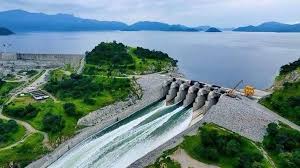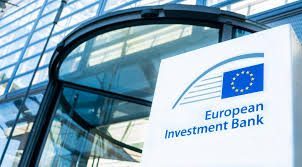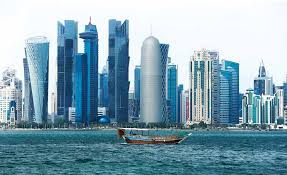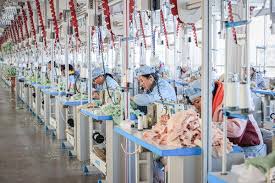Ethiopia has taken steps to persuade its neighbors and the continent at large that the Grand Ethiopian Renaissance Dam (GERD), which is scheduled to be opened on September 9, will promote prosperity for all rather than cause strife.
The dam, which has long been at the center of regional concerns over the future of the Nile, is framed as Africa’s greatest hydroelectric plant and a symbol of independence.
However, Ethiopian officials maintain that the project is a Pan-African investment in clean energy, resilience, and integration as well as a national victory.
Built with the blood and sweat of Ethiopians, this is our eternal Ethiopian towering monument.
At a press briefing on Wednesday, Ethiopia’s deputy head of mission in Nairobi, Demeke Atnafu Ambulo, stated, “But it is also for riparian countries and Africa at large.”
Constructed in the Benishangul-Gumuz region across the Blue Nile, the GERD is the continent’s largest hydropower project with an installed capacity of 5,150 megawatts.
It is anticipated to generate 15,700 gigawatt-hours per year when fully operational, which would be a revolutionary change for a country where over 60% of its 120 million residents do not have consistent access to energy.
With Ethiopia’s population expected to nearly double by 2050, officials see the GERD as more than just infrastructure; as a lifeline for the country’s stability and growth, the project also aligns with continental ambitions for a green energy transition.
Ethiopia plans to expand electricity exports to Kenya, Djibouti, and Sudan by replacing its reliance on fossil fuels with renewable hydropower, with future connections planned to Tanzania and South Sudan.
Analysts believe this will lower energy costs, boost industrial competitiveness, and stimulate cross-border trade—all vital components of Africa’s long-term sustainability.
Ethiopia is hopeful, while Egypt and Sudan are still cautious.
Hence, more than 90% of Egypt’s freshwater demands come from the Nile, hence the country is concerned that upstream water management may jeopardize its agricultural and food security.
The 1929 Anglo-Egyptian Treaty and the 1959 Nile Waters Agreement, which gave Cairo and Khartoum almost exclusive control over the Nile’s flow while excluding Ethiopia and other upstream countries, are the main sources of its concerns.
Sudan has adopted a more balanced approach, acknowledging the possible advantages while calling for strong safety assurances and legally binding agreements on water release procedures.
However, Addis Ababa has denied these allegations, citing independent research and an International Panel of Experts that found the project could stabilize river flows, lower the risk of floods, and lessen the likelihood of drought downstream.
Ethiopia maintains that it has continuously provided Khartoum with data and sees Cairo’s opposition as stemming from antiquated ideas of “historic rights.”
Ethiopia’s case seems to be supported by international law.
Addis Ababa uses the UN Watercourses Convention, which upholds the idea of fair and appropriate use of transboundary waters, as justification for its strategy.
In Ethiopia, the GERD has enormous symbolic significance that goes beyond geopolitics.
This dam was funded by domestic bonds and citizen contributions, with assistance coming from teachers, farmers, civil personnel, and the diaspora, in contrast to many other African megaprojects that were constructed on foreign loans.
This makes it a genuine people’s project for many Ethiopians, a unifying emblem of perseverance and pride in their country.
Ambulo stated, “This project belongs to Ethiopians everywhere.” “Every citizen is interested in it.”
The GERD will be unveiled at the Second African Climate Summit, which will take place in Addis Ababa from September 8–10 and bring together over 45 heads of state and government to discuss climate resilience and renewable energy.
Ethiopia hopes that the two ceremonies would recast the GERD as a continental symbol of collaboration and sustainability rather than a hot spot for conflicts.
According to officials, the project demonstrates Africa’s resolve to use its natural resources for the benefit of all.
The GERD might serve as a pillar for Africa’s response to the climate issue by integrating regional energy markets and lowering reliance on imported fossil fuels.
Ethiopia is counting on the recently approved Cooperative Framework Agreement (2024) to offer a long-term foundation for Nile Basin cooperation, even though there are still concerns about legally binding agreements with Egypt and Sudan.
It is hoped that the emphasis will move from disagreements to the potential brought about by the GERD, including increased electrification, greener growth, and a new paradigm for independently funded infrastructure in Africa.
Ethiopia is eager to present the GERD as more than just turbines and concrete as the opening draws near.
It is “Africa’s beacon of resilience, integration, and shared progress,” according to Ambulo.




















